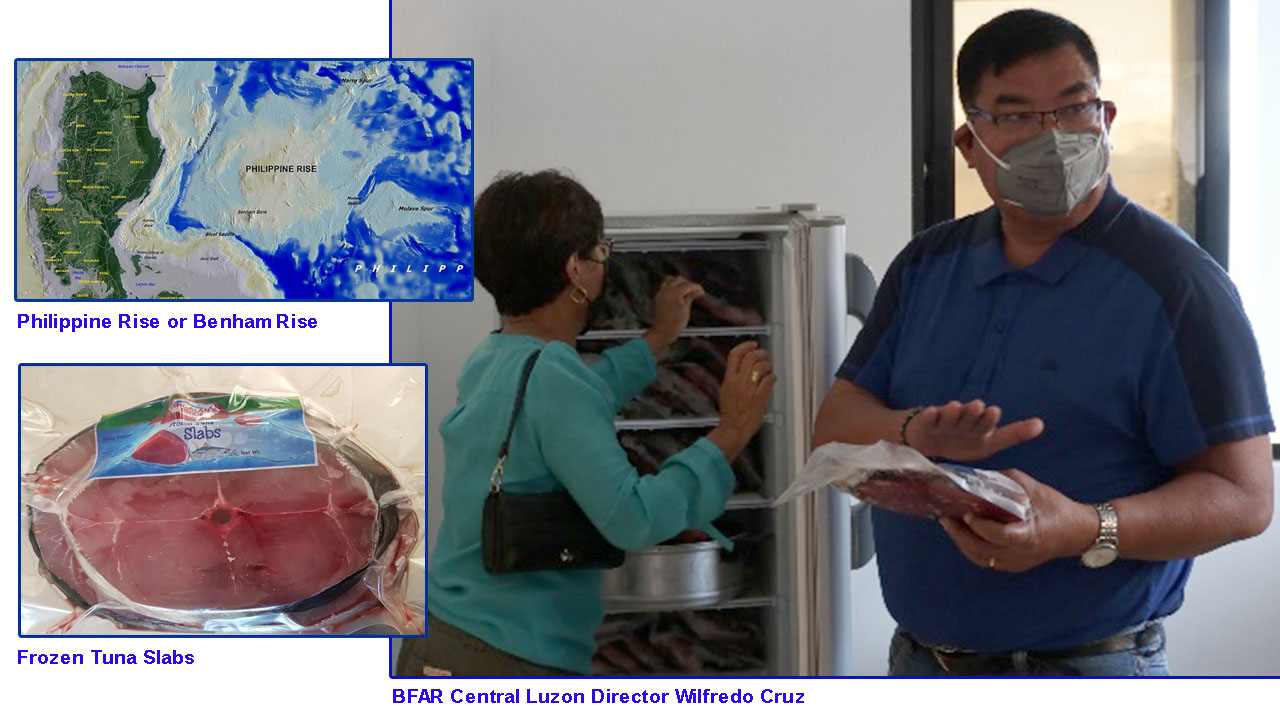
The municipality of Dingalan, in Aurora Province, may soon emerge as the next “tuna capital” of the Philippines, after General Santos City, in Mindanao.
This third-class municipality, situated 183 kilometers northeast of Metro Manila, currently has one main cemented road and branching alleys. Currently, it is called the “Gateway to Southern Luzon,” but soon, it is likely to become a major player in the country’s tuna trade—thanks to its suitable location.
Dingalan has been blessed to be bounded on its eastern side by the Philippine Rise (previously known as Benham Rise), a 13-million hectare undersea extinct volcanic ridge located in the Philippine Sea. This underwater ridge has been found to have rich biodiversity and abundant natural resources that offer a safe haven for spawning, while its numerous seamounts serve as a nursery zone for oceanic tuna species, including the endangered Pacific bluefin.
When previously only research activities within the Philippine Rise are allowed, about 3,000 hectares of the feature have been designated in 2017 as special fisheries management area and “protected food supply exclusive zone,” where fishermen in Dingalan and other neighboring municipalities are allowed to fish for food.
To date, Dingalan has about 300 fishing boats and 20 commercial fishing vessels. The focal point of fishery activities in this small town is the community fish landing center (CFLC in the “aplaya,” in Barangay Paltic. Here, the day’s fish catch is transported from the carrier boats to the landing facility, where buyers from all over Northern Luzon await to purchase the freshest fish for sale to markets and restaurants.
Near the aplaya is a small processing facility for tuna that produces limited quantities of sliced sashimi, belly, jaw (panga), and tail (buntot) for select markets.
On July 27, 2020, officials of the Department of Agriculture-Bureau of Fisheries and Aquatic Resources Region 3 (DA-BFAR3), led by Regional Director Wilfredo Cruz, visited the area and were welcomed by Dingalan Mayor Sherwin Taay.
After witnessing the unloading of the bountiful fish catch from two commercial boats, Director Cruz said he will advocate for the development of the town’s fishery sector.
First on the list is the construction of a fish port that will also serve as a dock and refuge for all vessels during typhoons, and station for the Philippine Coast Guard. Cruz said he already submitted the proposal to the DA-BFAR central office for consideration and approval.
Meanwhile, the DA-BFAR3 will assist the municipal government of Dingalan organize a fisherfolk cooperative that will allow members to qualify for assistance to procure bigger boats — like a 62-footer fiberglass carrier boat with 12 smaller catcher boats — as well as put up bigger cold storage and processing facilities.
In all, DA-BFAR3 Director Cruz said “our continued assistance will surely bring ‘masaganang ani at mataas na kita‘ to the fisherfolk in Dingalan.
For his part, Secretary Dar said he will instruct the Philippine Fisheries Development Authority (PFDA) and BFAR to conduct a feasibility study on the establishment of a fishport complex in Dingalan, Aurora, and a wholesale fish market in Rosales, Pangasinan.
He said sashimi grade tuna from Dingalan can be flown out of the country thru Clark Airport, and various fish produce from Pangasinan, Aurora, Zambales, and Central Luzon can be consolidated in Rosales, Pangasinan and distributed to north, central, and north-eastern Luzon, and even to Metro Manila.
Very soon, Dingalan will not only be known as the “Batanes of the East,” but also as the country’s “tuna capital of the north.” ### (DA-BFAR3 & DA StratComms)













